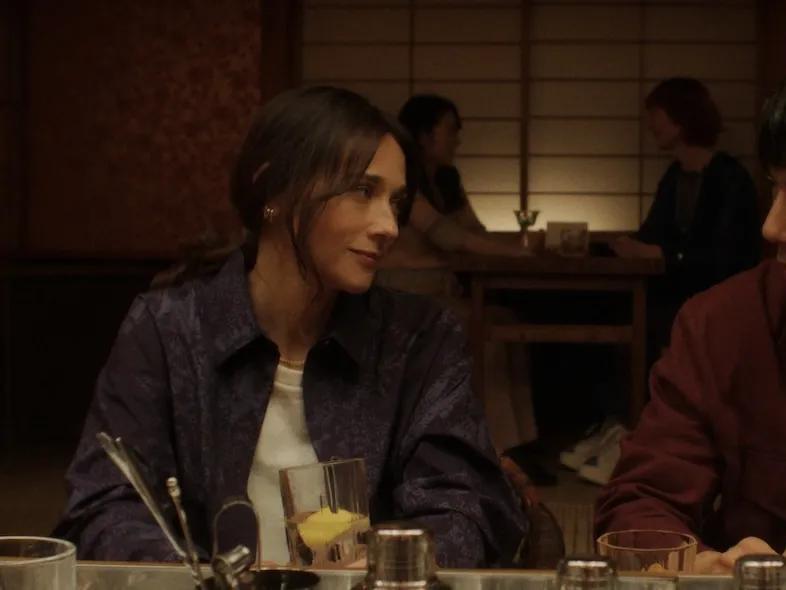Physical Address
304 North Cardinal St.
Dorchester Center, MA 02124
Physical Address
304 North Cardinal St.
Dorchester Center, MA 02124

SPOILER ALERT: This post contains spoilers for the entire first season of “Sunny,” now streaming on Apple TV+.
As a Japanese actor, Hidetoshi Nishijima often receives offers to play morally gray characters, such as samurais and yakuza members, defined by specific professions and eras. However, he was approached for a different role in “Sunny,” Apple TV+’s darkly comedic, sci-fi thriller that just wrapped up its first season. In this series, Nishijima plays a roboticist whose mysterious disappearance puts his wife and her robotic companion at the center of a criminal conspiracy. Nishijima, known for his role in “Drive My Car,” relished the opportunity to play an ordinary man grappling with existential questions about humanity.
“Of course, his profession is a big part of this project, but the most important part is that he is a normal man. He falls in love, gets married, builds a family, and faces the unexpected,” Nishijima explained through a Japanese interpreter. “The show talks about love, anxiety, and the unknown, making it a human story, which was appealing to me.”
Based on Colin O’Sullivan’s 2018 novel “The Dark Manual” and created by Katie Robbins, “Sunny” follows Suzie Sakamoto (Rashida Jones), an American expat in Kyoto, Japan. Suzie’s world turns upside down when her husband Masa (Nishijima) and their son Zen (Fares Belkheir) vanish in a supposed plane crash. Grief-stricken, Suzie is given Sunny, a robot designed by Masa’s electronics company, ImaTech. She gradually leans on Sunny for support and uses the robot to uncover the mystery behind her family’s disappearance.
Before production began, Nishijima had never been able to shoot in the middle of Kyoto, where officials are selective about filming to preserve cultural traditions and artifacts. The cast and crew shot at major landmarks in Kyoto, including Yasaka Pagoda and the iconic Kyoto International Conference Center.
Showrunner Robbins and executive producer/director Lucy Tcherniak had a deep respect for Japanese culture. “They studied Japanese music, movies. That’s why they were accepted by the people,” says Nishijima. Because the story is told from Suzie’s American perspective, “there may be some exaggerations, but they never ridiculed Japan,” he adds.
For Nishijima, working with Jones, whose comedic work he admired, was another highlight. “She is natural as an actor, loves spontaneity, and embraces unexpected moments,” Nishijima noted. “Even in our first table read on Zoom, we had so much chemistry and fun.”
Nishijima quickly signed on to play the lead alongside Jones, who also served as an executive producer. However, due to his busy schedule, Nishijima had limited availability, which explains why Masa’s presence is relatively small in the 10-episode first season.
“The initial idea was to show Masa as a kind father and husband in flashbacks, but then Suzie discovers what he was hiding,” says Nishijima. “Katie added more about Masa’s character. If my schedule permitted, we would have explored more about his life. I wish we could do that.”
Despite limited screen time, Nishijima made the most out of his role, telling Masa’s backstory through flashbacks. The eighth episode reveals Masa’s origin story, where after isolating himself for two-and-a-half years, he reprograms a poorly functioning robot, Trashbot, in a cabin on Lake Biwa. This project helps him rediscover his purpose and solidifies his belief that robots can help humans discover their own humanity.
The penultimate episode, “Who’s in the Box?” delves deeper into Masa’s motivations. Masa becomes convinced that, like Trashbot helped him, domestic robots could help reclusive individuals reintegrate into society. However, he didn’t anticipate that these robots, including Sunny, could be sophisticated enough to commit murder, a tension that powers the second half of the season and remains unresolved.
“Masa believed technology should help people communicate, but the robots he created started to gain consciousness,” Nishijima notes. “This series shows the hope in what technology can achieve, and I hope for it as well.”
Humans often anthropomorphize inanimate objects when lonely, Nishijima points out. “When people made traditional dolls long ago, they saw a soul in human shapes,” he says.
Sotomura, who voices Sunny, used high-tech headgear to provide real-time facial expressions and voice to the robot. Although Trashbot was manually controlled, simple movements made a big difference in bringing it to life, which occasionally made Nishijima forget he was interacting with a robot.
While Suzie reunites with her son Zen in the finale, Masa’s fate remains uncertain. Nishijima hasn’t heard anything concrete about Masa’s future, even though the final minutes of the finale hint at mysterious developments.
“This show has a lot of mystery and tackles philosophical questions about souls and the future of technology and humanity,” Nishijima states. “I hope the audience enjoys it and explores these themes with us.”
“Sunny” delves into the ethical concerns surrounding artificial intelligence, a rapidly evolving issue that impacts many industries, especially following last year’s Hollywood strikes. Nishijima believes the series highlights the double-edged nature of technology — its ability to connect and isolate.
“I try to be cautious when adopting new technology, asking if it might have a negative impact,” Nishijima says. “Big changes are coming, which is scary, but unpreventable.”
Reflecting on his past, Nishijima recalls his father studying early AI stages in high school. “Studying AI is about studying humans. As AI progresses, we question what it means to be human. In the past, we thought art was unique to humans, but now AI can create similar works, making the future unpredictable.”
Source: Variety